One of the excursions planned for the Road Scholar extension in Chicago was an "Architecture Tour" of the city. We heard good things about it from the staff, so we asked the Palmer House concierge about it. Turns out there are several companies that offer such tours. She recommended the First Lady and reserved us tickets for the morning cruise of our second day.
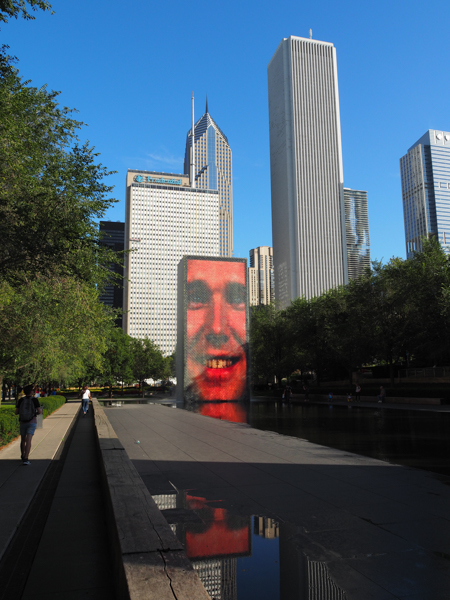
As we walked to the embankment, we passed Millennium Park and the Crown Fountain. The fountain consists of two towers of glass tile with water running down their faces. The images changed over time, sometimes disappearing, and on occasion water would spew from the "mouths."
The link has all kinds of information, but the real appeal of the fountain is being there.
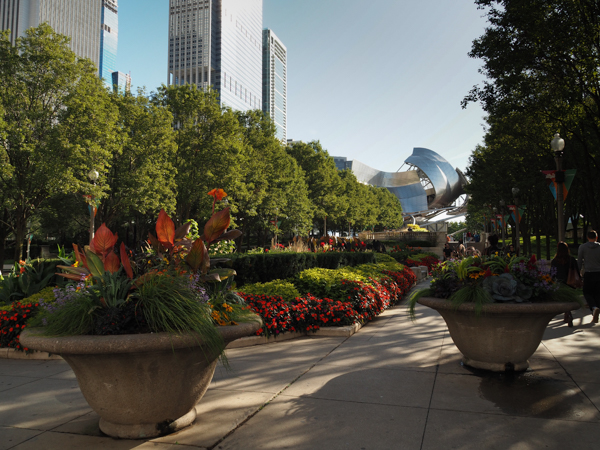
Chicago had more street plantings than any city I have ever visited.
The stainless steel "wings" in the background belong to the Pritzker Pavilion designed by Frank Gehry. I am not a fan of Gehry's designs, but it seems this is a successful project. Since it's already outside, there's less concern about leaks.
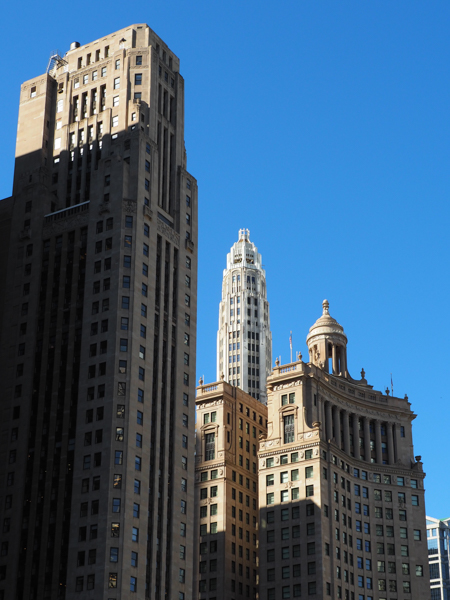
As we embarked on the Chicago River for the architecture tour, I wondered how I would ever remember all the sights. Short answer: I won't, but here are some that I do.
The area where we embarked is across the river from the original non-indiginous settlement in the area and adjacent to the site of Fort Dearborn. It opened to modern development with the construction of the Michigan Avenue Bridge. Many of the buildings on the left bank are from the Deco period of the 1920s and 1930s.
The designation of "left bank" and "right bank" is complicated for the Chicago River. As one faces downstream, the left bank is on the left. The Chicago River, however, has reversed its flow. It once flowed INTO Lake Michigan, but after a canal project in the late 19th century, it now flows AWAY from Lake Michigan towards the Mississippi River. The Chicago Sanitary and Ship Canal was and is controversial.
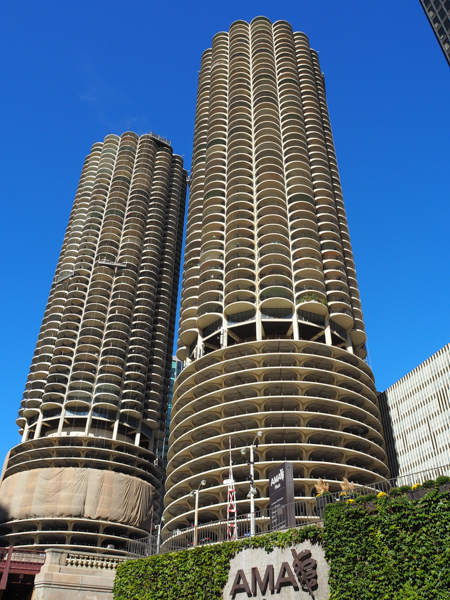
The Marina City towers were an attempt to stem white-flight from downtown Chicago in the 1960s. They were quickly nicknamed the "corncob towers."
The architect, Bertrand Goldberg, although a disciple of Mies van der Rohe, held to organic forms rather that the austere rectilinear forms of the International Style. We thought he owed some of his concepts to Antoni Gaudi.
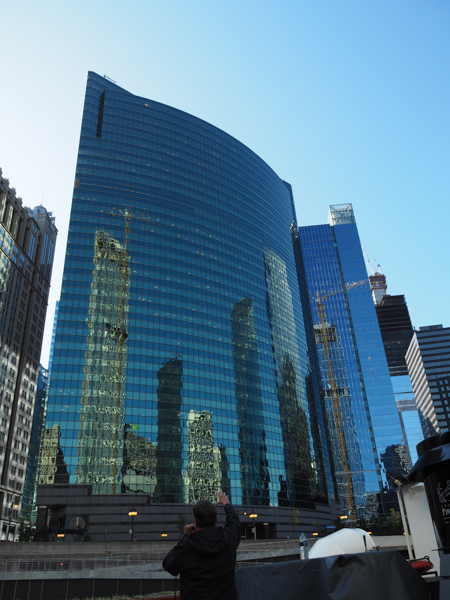
The building at 333 West Wacker Drive sits at the junction of the main and south branches of the Chicago River. The firm of Kohn Pedersen Fox designed it in the 1970s. Some consider it Chicago's first Postmodern skyscraper.
The reflections of surrounding buildings make it very much a part of its space.
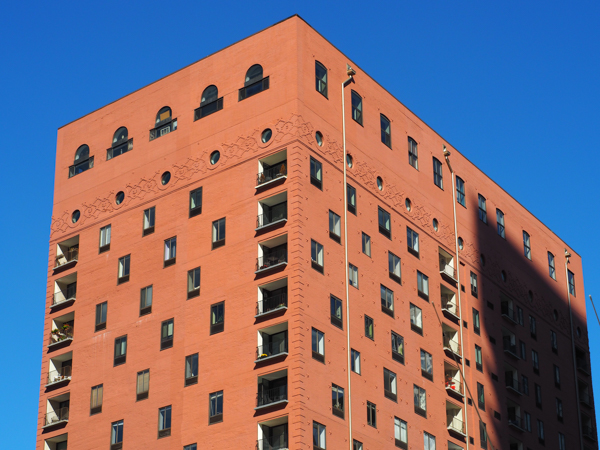
As we proceeded up the northern branch of the Chicago River, we entered a former warehouse district that has been turned into offices and condominiums.
In the late 19th century Fulton House was a cold-storage facility. The cool-ation in those days was from ice so the walls were extraordinarily thick. The architect who designed the conversion to condominiums in 1979 cut balconies and deep windows into those thick walls.
It was one of the first renewal projects in the area.
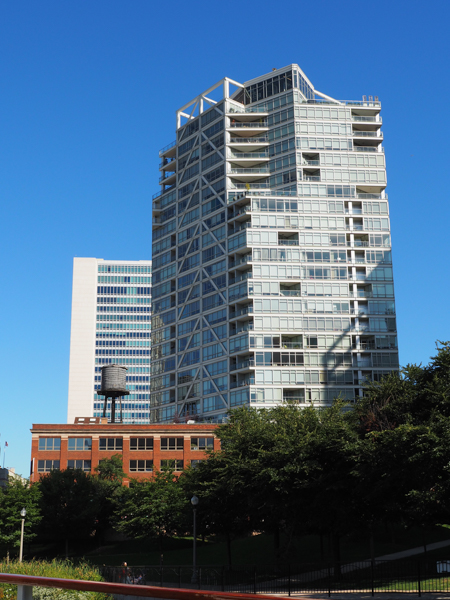
The tall building with the chevron structure is entirely new, but its neighbor with the water tower is not.
After the Great Chicago Fire of 1871, all buildings in the city were required to have an on-site water source to prevent another such disaster. Mrs. O'Leary's cow, by the way, was officially exonerated in 1997!
The exterior chevrons are structural and minimize the number and thickness of interior columns. That leaves more space for the apartments.
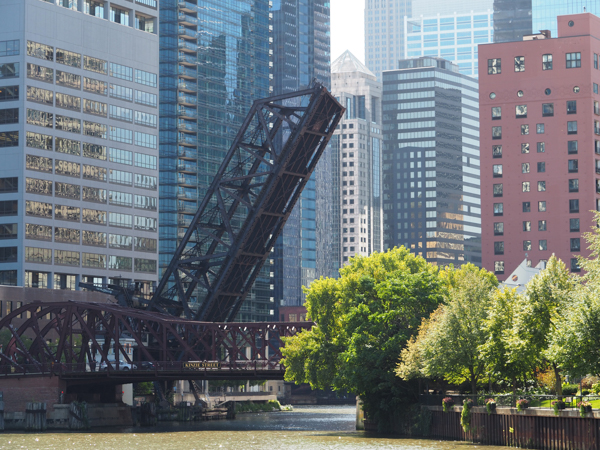
The Chicago River is crossed by over 50 moveable bridges. There is a specific type of bridge developed in Chicago called the Chicago style or trunnion bascule bridge. The bridges may have two leaves or one as shown here.
The raised bridge is the Kinzie Street railroad bridge. It was opened in 1908, but when the last railroad customer to the east of the bridge moved out of town in 2000, it went out of service. Nevertheless it is lowered and inspected annually and is still considered serviceable. It received landmark status in 2007.
Repair work on this bridge in 1992 was the trigger for the Great Chicago Flood. A replaced piling came too close to an old tunnel underneath the river eventually breaching it and flooding basements, subways, and the rest of the tunnel system. The entire Loop District was shut down until the "leak" was plugged.
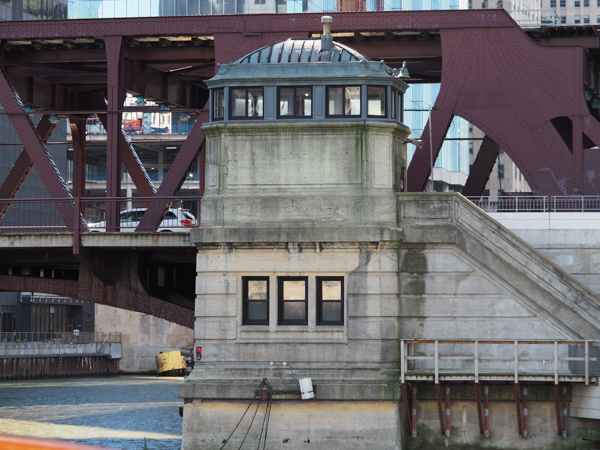
Each of the moveable bridges had a bridge tender's house. These were the offices, sometimes residences, of the people who kept a watch out for boats that were large enough to have the bridge raised.
Many such jobs are now automated, but according to the Bureau of Labor Statistics, in 2018 there were an estimated 3,170 people nation-wide employed as bridge and lock tenders at an average annual wage of $46K. Advancement opportunities are slim and employment prospects are low. Illinois had the second-most number of jobs among the states -- after Louisiana (?!).
Each bridge had a house attached to it. The styles varied quite a bit.
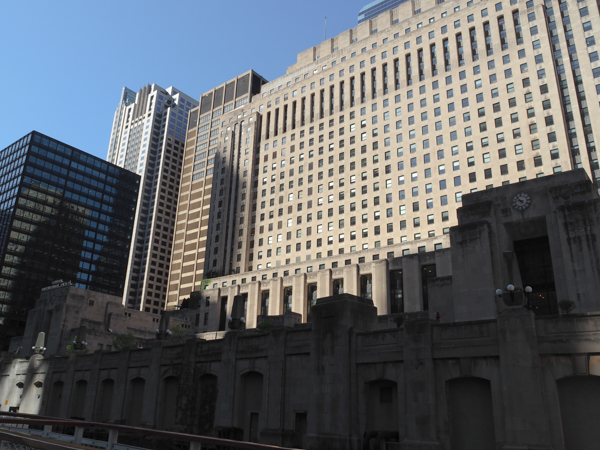
From the northern branch of the river, we proceed to the southern branch.
At one time Chicago had the largest post office in the country. The USPS moved in 1997 and the building stood vacant for several years.
Why so large? Chicago was the headquarters of two of the largest mail order companies in the world: Sears Roebuck & Montgomery Ward.
In 2009 the building sold at auction and developers floated a variety of redevelopment plans, none of which went anywhere. The building was sold again in 2016 and at present Uber plans to use it for its freight operations.
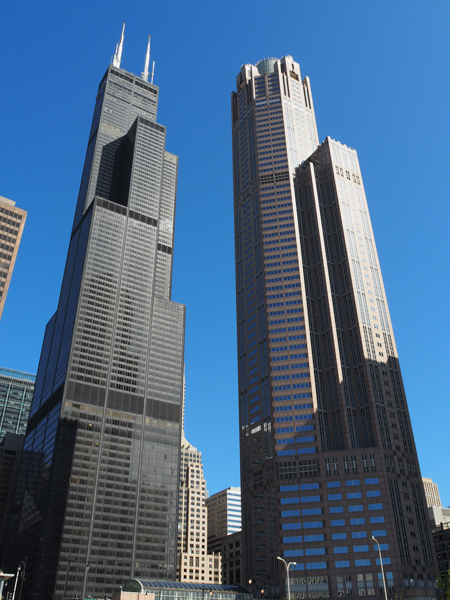
The Willis Tower (once the Sears Tower) is on the opposite side of the river from the old Post Office. The information at the link gives some of the pioneering design and construction details.
Perspective makes the neighboring building, 311 South Wacker, look almost as tall, but it isn't even close -- a mere 65 stories to 110.
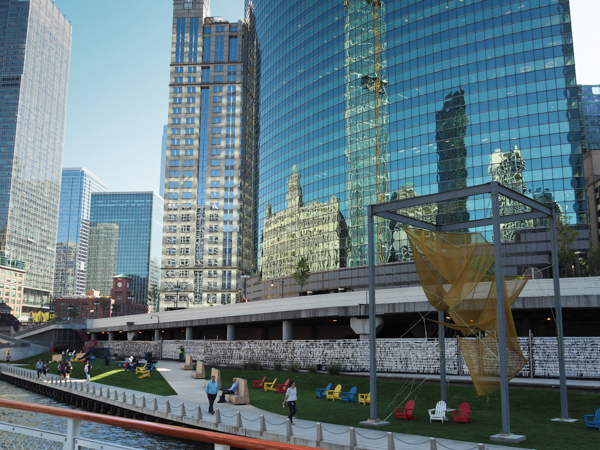
The Chicago Riverwalk has opened up the river to pedestrian use. All new developments or redevelopment projects along the river are required to provide public space for its extension.
Our guide pointed out various "rooms" along the walk providing spaces for gathering, relaxation, and art displays. Had we more time in the city we would have explored it in greater depth.
At one time the river was so heavily polluted that no one would dream of spending any time there. It is now recovering. Fish have returned, some people kayak, and there is talk of someday allowing swimming.
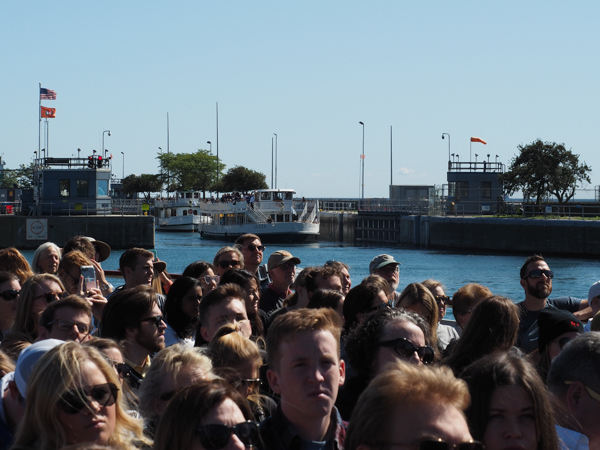
We turned around in the basin where the Chicago River once flowed into Lake Michigan. After the reversal, it is now where Lake Michigan feeds the Chicago River. A lock system controls the flow, which is limited by a Supreme Court decision and international treaty to somewhat more than two billion gallons per day.
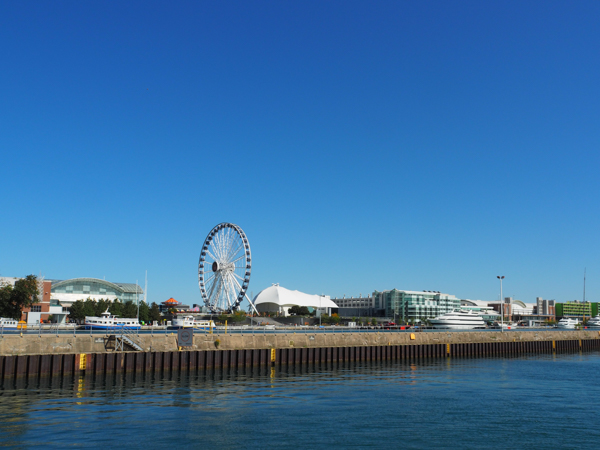
Navy Pier, where our ship was first scheduled to dock is adjacent to this basin.
The world's first Ferris Wheel was a centerpiece of the 1893 World's Columbian Exposition. The original Ferris Wheel held over 1,400 people. It was rather larger than the one at the county fair.
Prior to our trip we read one of the recommended books, The Devil in the White City. It entwines the story of the exposition with the actions of a man eventually executed as a serial killer.
Arabian Horse enthusiasts remember the exposition as the first major importation of Arabian Horses into this country by the Hamidie Hippodrome Society of Turkey. The Society sold the horses in the US rather than take them back and many of them appear in today's bloodlines. All the online references that I've been able to find are too technical to be of general interest so I've not included any here.
Click your "back" button to return to the previous page or click for our picture album.